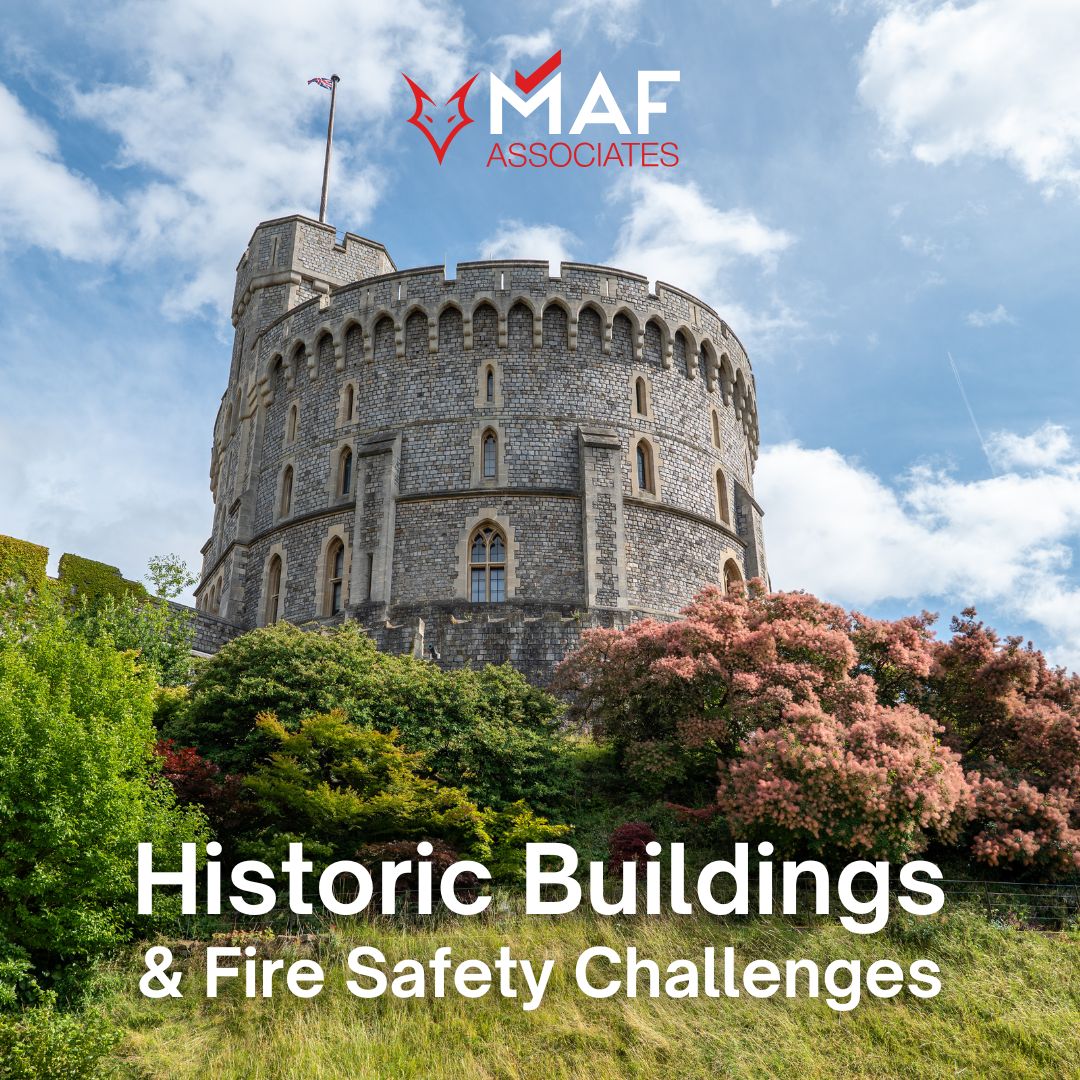Historic Buildings and Fire Safety Challenges

Introduction
Historic buildings are more than just relics of the past; they are living connections to our cultural heritage, shaping the character of cities and communities. Whether it’s a medieval castle, a centuries-old church, or a grand Victorian townhouse, these structures carry stories that span generations. But preserving them isn’t just about keeping the walls standing, it’s about protecting them from threats like fire, which can erase centuries of history in minutes.
Striking a balance between maintaining historical authenticity and ensuring modern fire safety is no small task. These buildings weren’t designed with today’s safety standards in mind and retrofitting them requires careful consideration. How do you install fire alarms without ruining intricate wood panelling? How do you protect ancient timbers without compromising their visual appeal? This article explores the unique fire safety challenges of historic buildings, and the common innovative solutions used to protect them.
Challenges
In 1992, a devastating fire tore through Windsor Castle, one of Britain’s most treasured landmarks. The blaze, caused by a spotlight setting fire to a curtain, raged for 15 hours, destroying historic rooms and priceless artefacts. This incident was a wake-up call for conservationists and fire safety experts, highlighting the vulnerability of historic buildings to fire.
The core problem? These structures were built in an era when fire safety wasn’t a priority. Many historic buildings feature highly combustible materials like untreated timber, thatched roofs, and wooden panelling. Over time, these materials dry out, making them even more flammable. The open layouts, grand staircases, and hidden voids behind walls create perfect conditions for fire to spread rapidly.
Electrical systems are another common culprit. Outdated wiring, often hidden behind ornate ceilings or wooden beams, can become a major fire risk. Overloaded circuits and aging insulation increase the likelihood of an electrical fire—an issue that is difficult to address without significant disruption to the building’s structure.
Unlike modern buildings, historic structures often lack essential fire safety features such as fire compartments, smoke detectors, or sprinkler systems. Introducing these measures without damaging the building’s historical character is a complex challenge that requires creative solutions.
Balancing Preservation and Safety
Protecting historic buildings from fire isn’t just about safety, it’s about safeguarding irreplaceable history, from hand-carved wooden staircases to priceless paintings. When Notre Dame Cathedral caught fire in 2019, the world watched in horror as the iconic spire collapsed. The tragedy reinforced the importance of balancing fire prevention with heritage conservation.
So how can fire protection be implemented without compromising a building’s character?
- Fire Detection – Installing traditional wired fire alarms can be invasive and visually disruptive. A more discreet solution is wireless smoke and heat detectors, which blend seamlessly into historic interiors. Some buildings use aspirating smoke detection (ASD), which samples air through near-invisible tubing. For example, at the Palace of Westminster in London, an advanced fire detection system was installed with hidden sensors to preserve the building’s historic charm.
- Fire Suppression – Standard sprinkler systems can cause as much damage as the fire itself, especially to delicate interiors. Instead, water mist systems release a fine mist, controlling fires while minimising water damage. St. Paul’s Cathedral, for example, installed a water mist system to protect its historic woodwork and artwork. In some cases, inert gas suppression systems (like nitrogen or argon) can extinguish fires in enclosed spaces without harming artefacts.
- Enhancing Fire Resistance – Strengthening a building’s fire resistance doesn’t have to mean major visible alterations. Fire-retardant treatments can be applied to wooden beams, doors, and staircases without affecting their appearance. In Edinburgh Castle, custom-built fire-rated doors were designed to look like the original medieval ones, ensuring both protection and historical accuracy. Additionally, fire-resistant barriers can be discreetly placed behind wooden panels to slow fire spread while maintaining the building’s aesthetics.
Stakeholder and Compliance
Protecting historic buildings from fire requires a team effort. Fire engineers, conservation officers, heritage agencies, and building owners must collaborate to develop tailored fire safety solutions that meet modern safety standards while respecting historical integrity.
Regulations play a key role in this process. In the UK, BS 9999 provides flexible fire safety guidelines for historic buildings, while in the US, NFPA 914 serves a similar purpose. International organisations like UNESCO and ICOMOS offer guidance on best practices, ensuring fire safety measures are implemented without compromising a building’s historical value.
However, standard regulations don’t always fit the unique needs of historic sites. In cases where traditional fire safety measures aren’t feasible, a detailed fire engineering approach is required. This can involve advanced fire modelling, customised risk assessments, and bespoke fire protection strategies tailored to each building’s structure and historical significance.
Conclusion
Fire safety in historic buildings is a delicate balancing act—one that requires innovative solutions, careful planning, and close collaboration between experts. By integrating modern fire detection, suppression, and structural reinforcements while respecting architectural integrity, these landmarks can be protected without losing their historical essence.
Every fire that damages a historic building is a loss not just for its owners, but for society as a whole. By continuing to refine fire safety strategies, we ensure these cultural treasures remain standing, telling their stories for generations to come.